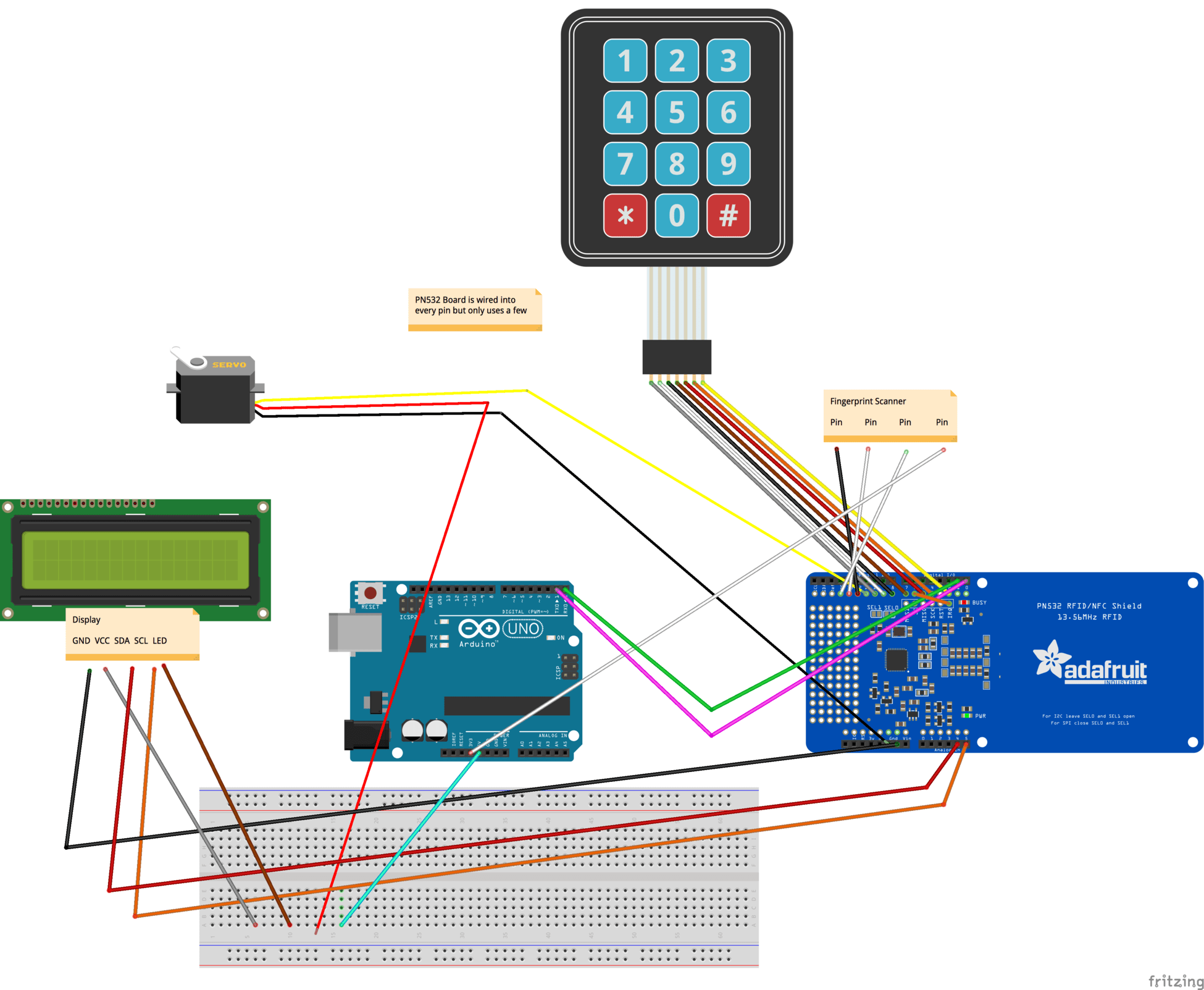Eamon H.
Hello, my name is Eamon and I am a rising junior at Manhasset High School. The Intensive project I decided to build is the fingerprint and keypad safe. The reason I wanted to build this safe over other projects is because it included both arduino coding skills that I could learn as well as a real world engineering aspect. I have the capability to learn both about coding and how to put components together in order to create a complex project. I have always been fascinated with the idea of fingerprint scanning and my project also has an effective purpose to it. The starter project I decided to build was the voice changer, I chose it because i felt that working on the voice changer would be helpful in reestablishing my soldering skills and would also teach me more about sound, an idea I may wish to use in my main project at a later date.
Reflection
Looking back on my project I feel that it has allowed me to gain experience in the field of engineering and also it has given me an opportunity to realize my dreams of becoming an engineer. Before Bluestamp I had a wish but no practical experience to test whether or not I really believed that wish was right for me. I thoroughly enjoyed encountering obstacles and slowly working my way around them. Nothing will surpass the feeling of being stuck on a problem and then having a flash of inspiration that guides one to the eventual success. To start with merely an idea and continually advance forward in the pursuit of its realization is the essence of engineering. Now that I have a completed project outfitted with my own special modifications I feel as if the past few weeks have been worth it. This is the first time I can look down on something and say that I am the one that created it. The greatest challenges I faced were when certain parts of the safe wouldn’t work for extended amounts of time. I had to troubleshoot for days just to solve one problem. I learned that to be an engineer is to solve one problem after the other until something magnificent emerges.
Engineer
Eamon H.
Area of Interest
Electrical/Mechanical/Computer Engineering
School
Manhasset High School
Grade
Incoming Junior
Final Milestone
My project during this program was the Keypad and Fingerprint scanning safe with the added modifications of a liquid crystal display and an RFID scanner. The project began with figuring out the fingerprint sensor and having it work with the keypad to turn the servo. Then the safe itself was modified to accompany the different components with the use of the dremel. After the safe was successfully modified I attached the Fingerprint sensor and Keypad; I also had to attach the servo in such a way that it tightly locked the box. Once this step was over the original safe was finished; however, the modifications continued on in the form of the liquid crystal display to issue commands and the RFID scanner to open up the safe with a wave of an RFID tag. I learned how to work with RFID and much about the arduino itself (functions of each pin) as well as how to overcome challenges. One of these challenges was enabling the RFID to only recognize one tag, an obstacle that took several days to come to fruition.




